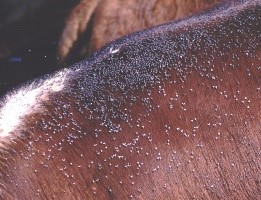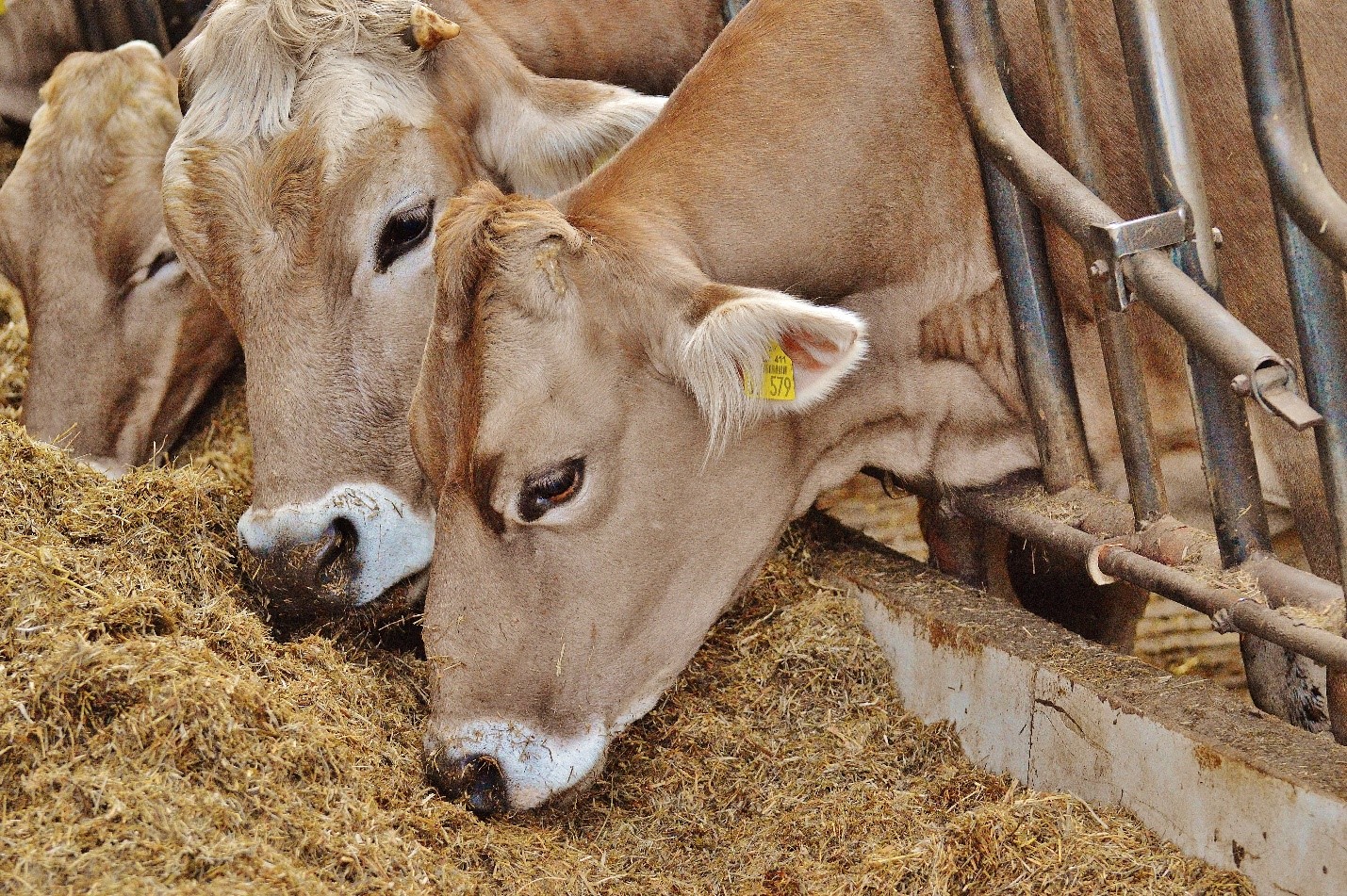Boy, are pests well… pesky. Whether they’re making a beeline for the dairy product, or the dairy cows – they spread diseases that can cause infections and lead to major losses in productivity.
Which is why it’s so important to guard your animals and your product from them. In this article, we’re going to talk about the best insect management policies to follow to keep your spaces clean and hygienic.
Different flies like horn flies, stable flies, horse flies, heel flies, house flies and other insects like cockroaches, mosquitoes, spiders, lice, mites and ticks can trouble your cows.

But a diligent, 3-step approach of planning, implementation and evaluation is a great way to tackle the insect issue head-on. Let’s discuss this.
Step 1: Planning
The first step in this phase would be to identify exactly what insects are affecting your cows. Different insects have different qualities so knowing their unique traits will help you fight them better.
For instance, a stable fly feeds mainly on the legs and flanks of the cattle and a face fly spreads diseases of the eye.
Step 2: Implementation
So now that you’ve identified the insects and the ways to quash them, you decide on the plan of action to be taken, zero in on the areas with the heaviest populations of insects, establish your methods, train the staff and then go to war!
Your implementation stage can be further classified into cultural, physical, mechanical and biological.
Cultural:
This is the phase where you put down some daily practices that are to be followed by everyone on the farm. For instance:
- Spreading out lots of mulch or biomass on your pastures
- Having a proper manure management system in place as this is one of the primary breeding sites for flies
- Changing the bedding as a sweet feed or spilled milk will attract insects
- Rotating hutches and cleaning them
- Keeping the barns well-ventilated
Having a clear system of certain rules that have to be adhered to is one of the first and important parts of the implementation phase. It sets the stage for all the other efforts in this man vs. insects battle!
Physical and mechanical:
This involves the maintenance of structures and facilities that will help put up a barrier against insects. For example:
- Using fans that have a downward and outward air fly to hinder fly activity in closed spaces
- Fill holes, seal electrical outlets
- Patch up wall or ceiling cracks and put mesh screens over windows
- Use closed garbage cans with tight lids
Biological:
This involves using other pests like predatory beetles, parasitic wasps, or fly pathogens to keep insect populations in check. The insects used here will not have any adverse effect on the cows or humans but will only prey on other insects.
Chemical:
This stage involves the use of chemicals like sprays, foggers and on-animal treatments for the control of adult flies.
There are clinically approved oils and tags that can be applied directly on the cattle to prevent fly bites and infections from lice. Some oils must be rubbed on the backs of the animals regularly and there are also ear tags that act as an insect repellent.
But these measures should always be done under the guidance of an expert.
Step 3: Evaluation
The last phase of the 3-step approach, will help gauge the effectiveness of the last two phases and provide scope for correction if needed. Use tools like speck cards and sticky traps to track fly populations and note down progress.
Figure out which methods worked best for your farm. And continue those for maximum results.
It is not advisable to fast-forward to the chemical stage and use only insecticides to remove insects. Studies have shown that long-term use of chemical repellents could lead to increased resistance.
Furthermore, it could also kill the fly’s natural predators thereby destroying a secondary means of control. It could also affect the health of the farmworkers and therefore must be done in moderation.
Which is why we’re going to revisit the cultural practice a little more and give you some tips on natural methods that you can follow to keep your cows’ living spaces clean and hygienic, which will automatically result in lesser insect traffic.
Managing manure:
Wash manure into lagoons, scrape it up and spread it on pasture or stack it up and be sure to put it in your to-do list to spread it later!
When you spread manure in a field as thinly as possible, it dries well. Flies and other insects do not get attracted to manure when it is in this drying stage.
Even when stacking manure, make sure it’s moisture content is less than 30%. When it’s dry at less than 30%, flies and insects aren’t attracted to it.
Also, make sure that there is no manure mixed with bedding. Especially during the fly breeding season, these areas should be watched like a hawk and cleaned as much as possible.
Managing feed:
Sometimes, your feed is made of sweet materials like molasses and brewer’s yeast which flies and cockroaches just can’t resist.
So you also have to ensure that small quantities of these sweet feed materials don’t accumulate anywhere.

Silage that spills right outside the silos and trench bunkers also provides a happy environment for adult flies to breed. If you make sure that silage spillage (now try saying that fast!) is minimised and your sheds have good drainage, you'll be able to keep breeding insects to a minimum.
No entry:
Make sure you seal insect entry points across your sheds, barns and milking parlours. Putting screens over windows, sealing or caking pipe openings and service lines will go a long way in denying entry to these creatures.
Water management:
Eliminating stagnant water will reduce the number of mosquitoes. Use old tires to hold down silage pit coverings. Making slits in these tires will let the collected water drain which will then prevent mosquitoes from breeding.
Light management:
Light also serves as a healthy weapon to fight off these little monsters. And while we don’t exactly mean brandishing a lightsaber a la Star Wars, these practices could be equal parts savage and helpful!
Insects are attracted to certain structures at night due to the lighting. And because of these insects, spiders end up visiting too. So, using lighting that is less attractive to insects like yellow light is better than a bright white or blue light that these insects love.
Light traps have been used for centuries. In the early days of yore, traps were fitted with lights and an electric grid. To reach this source of light, insects had to fly through the electrical grid wherein they would promptly be blasted into smithereens upon receiving an electric shock.
However, our ancestors quickly realised that these insect bits on exploding were contaminating the surrounding areas, including foodstuff (gross!). Today’s methods still use the same technology except that glue boards are used instead of grids (phew!).
Place the traps 5 feet above the floor (if possible) and do not let them be visible from the outside. Clean the trap regularly and keep replacing the glue boards. Also, UV bulbs should be replaced every year as they lose their ability to attract flies long before it burns out.
Insect management is a continuous process. It’s not just a one-off event.
Relying solely on chemical tools to eradicate insects when you could take a whole lot of steps before it comes to that, is not a good idea. A three-phased planned approach divided into further steps including:
- Inspection
- Identification
- Preventive action
- Analysis
- Treatment selection
- Monitoring
- Documentation
This will go a long way in making sure that your farm already has hygienic practices in place with well-trained staff to handle them and ensuring that insect management is a continuous process that has to be done regularly to avoid your animals from catching diseases or your food products to get contaminated.
We hope that this article gave you some useful tips on managing these tricky fellas! Until we meet again, happy farming!
- The Dedicated Team of Pasture.io, 2021-01-25